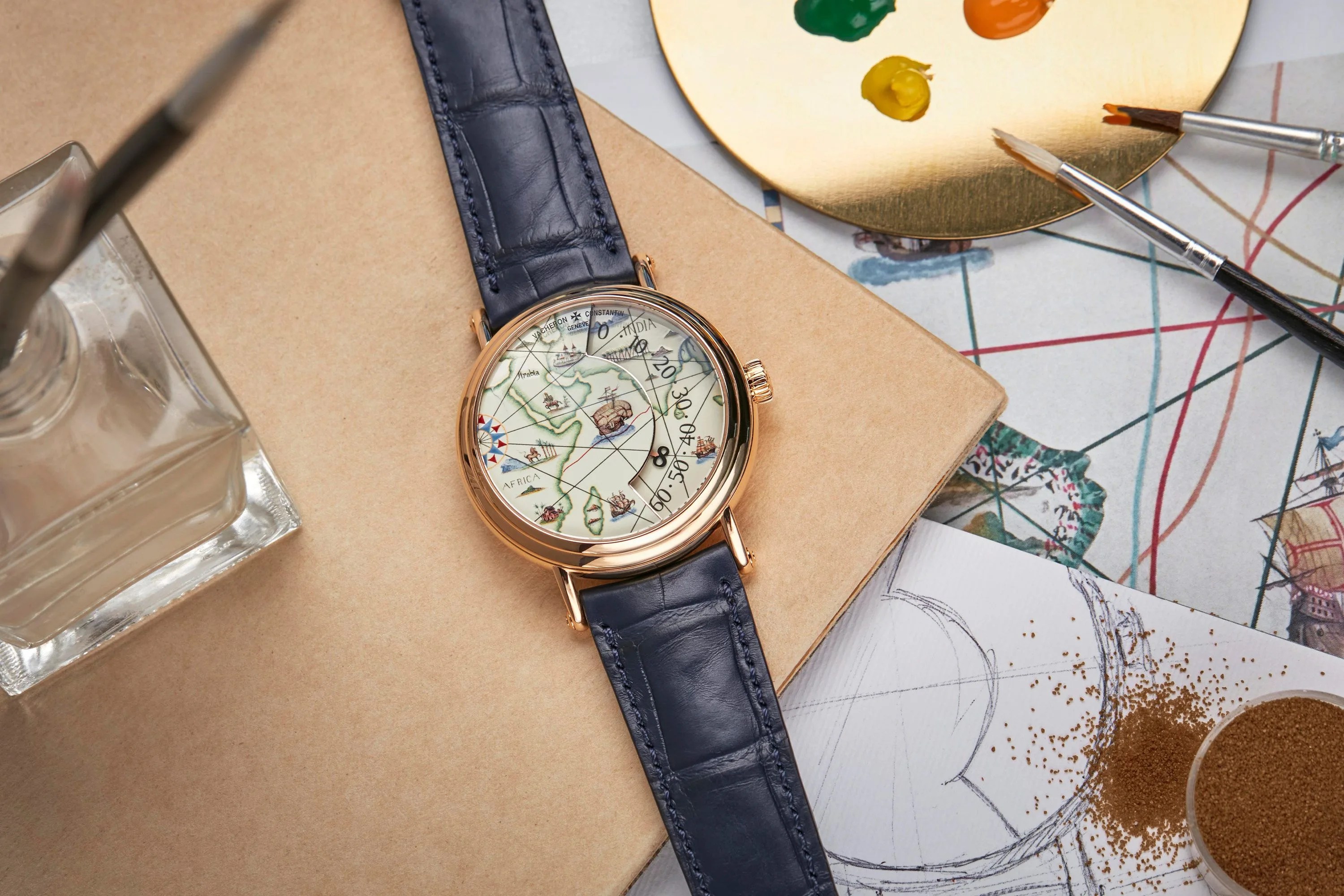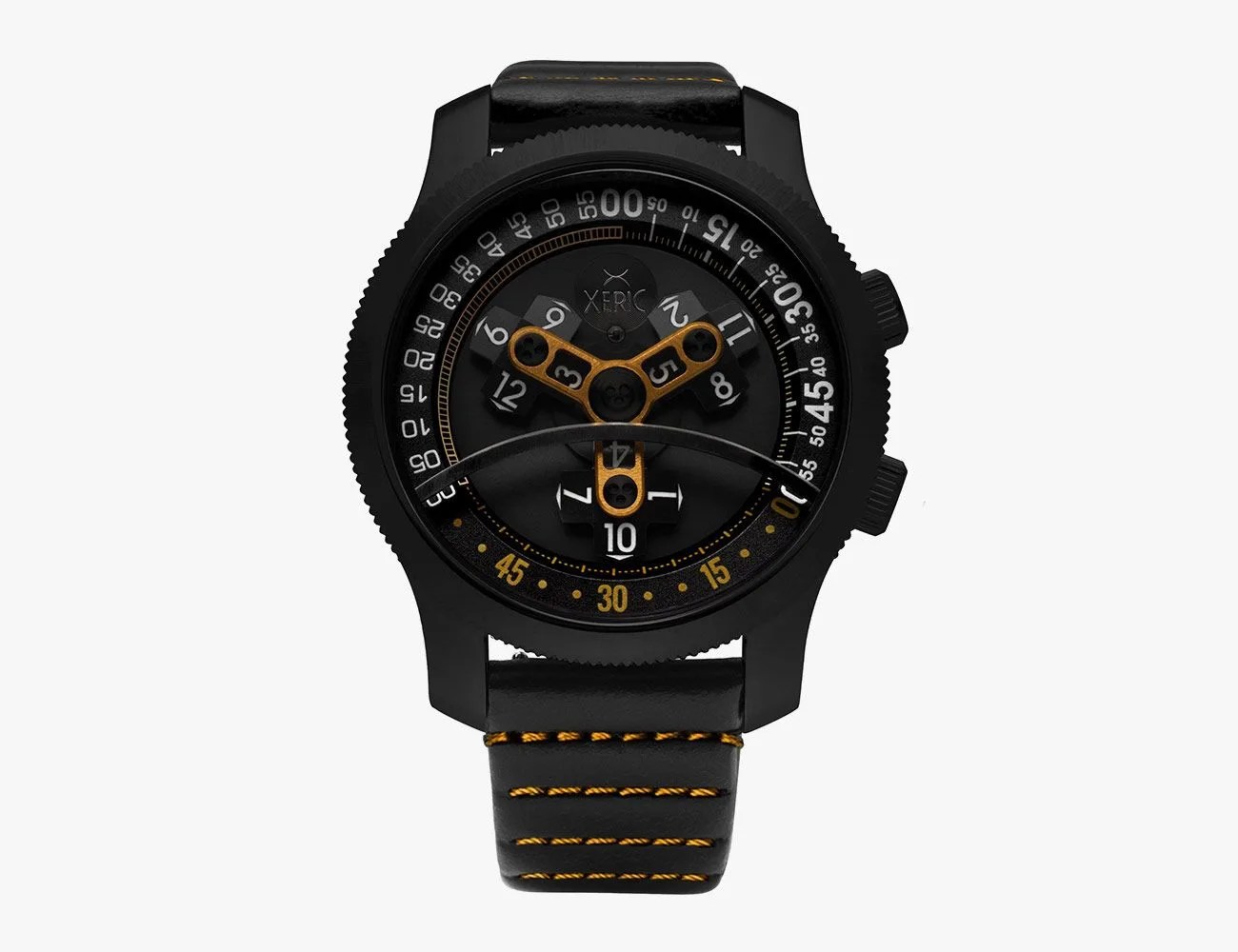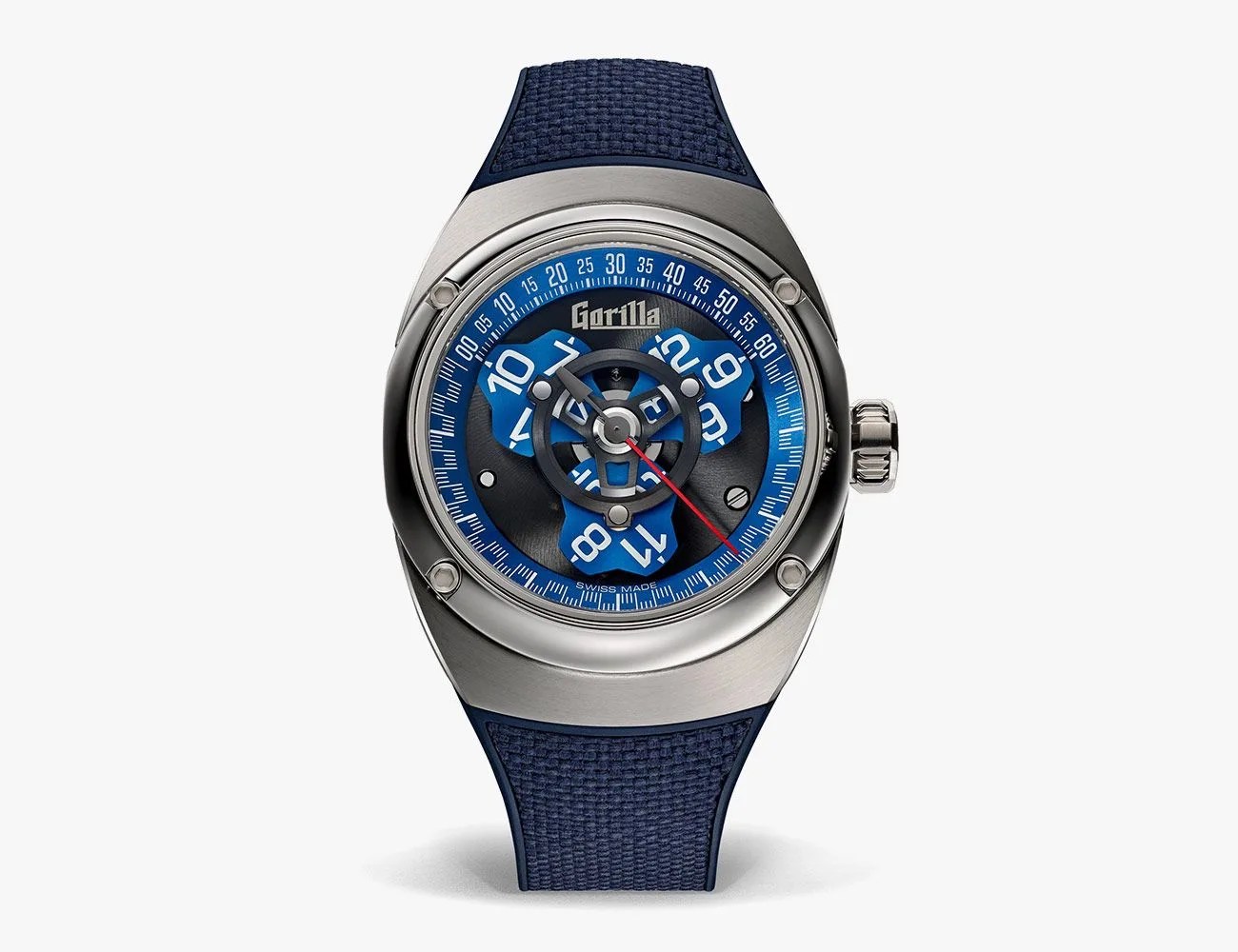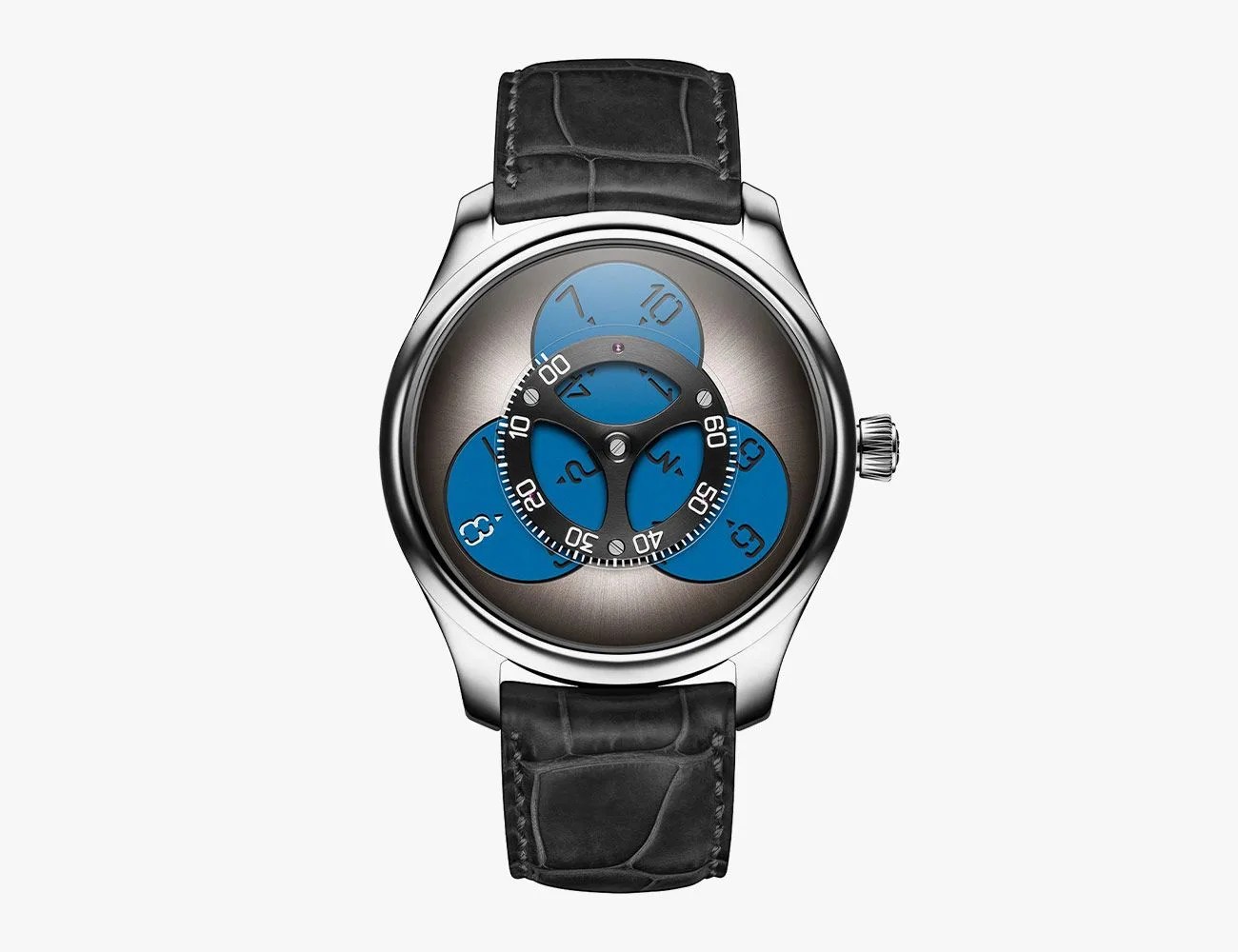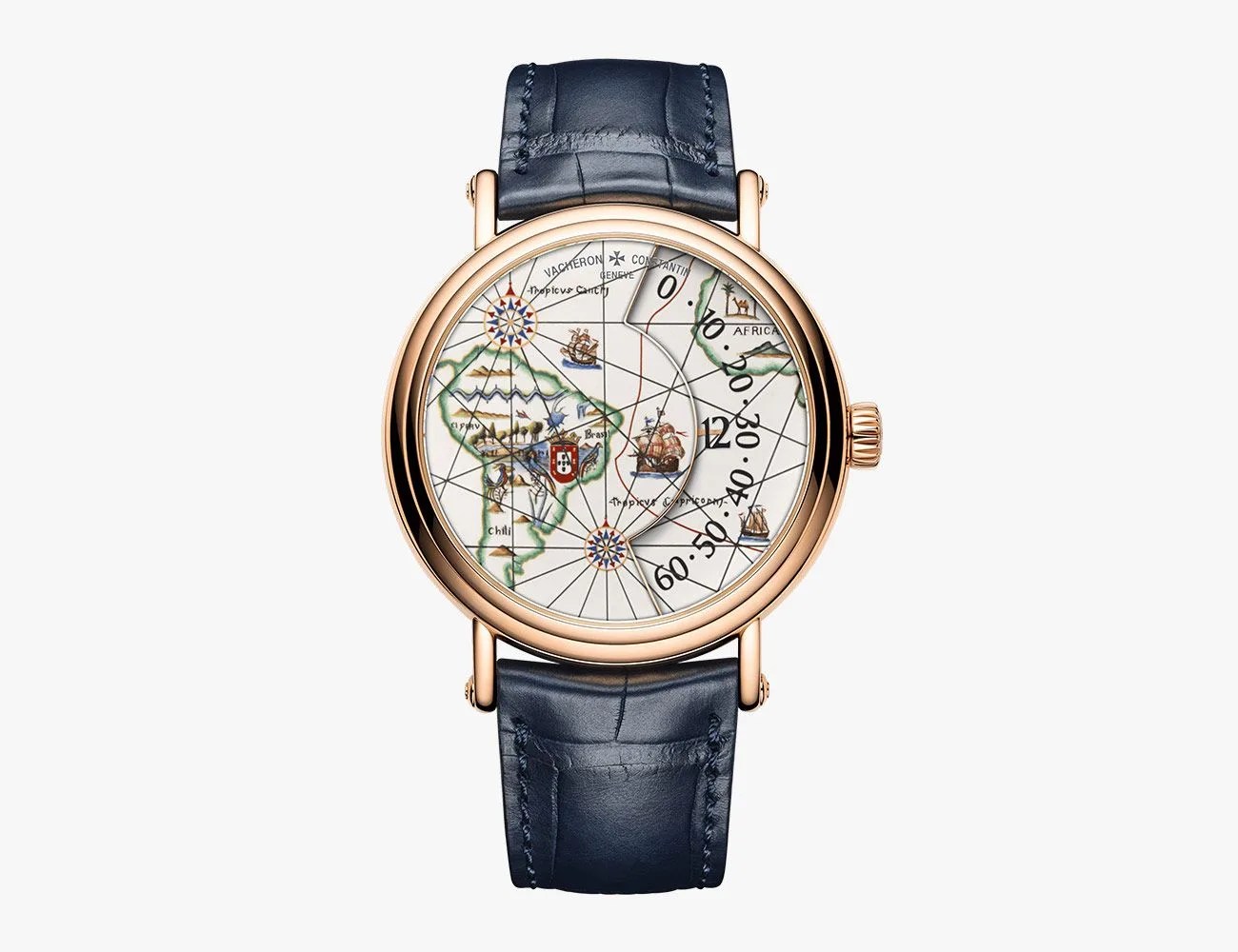Traditional, analog time telling is pretty practical and elegant, and there are seemingly endless ways of rendering hands that point to numbers around a dial. Maybe, though, you’ve seen enough traditional watch styles. Some watchmakers feel the same, and a wide range of modern brands offer watches with what might be termed “alternative time-telling displays” — but the idea is older than you might think. A special type of display called “wandering hours” is one of the most intriguing features in watchmaking, and its origin dates back centuries.
To read the time on a wandering hours watch you need to know that the minute hand itself displays the hour — but that explanation probably needs a little unpacking: In its most common form, a zero-to-sixty scale occupies a third of the dial and the current hour displayed as a number travels along it, pointing to the current minute. For traditional, classically styled examples, this is all you can see, and you might be left wondering how the hell it works.
Many modern watches with this feature prefer to display the whole, crazy-looking system. In this case, you’ll see that there are three centrally mounted arms, and that each has a disc (or more arms) at its tip. The discs each have four numbers which rotate into position at the end of the arm. (That’s the basic concept, but it can also be executed in other ways, including with more or fewer arms.)
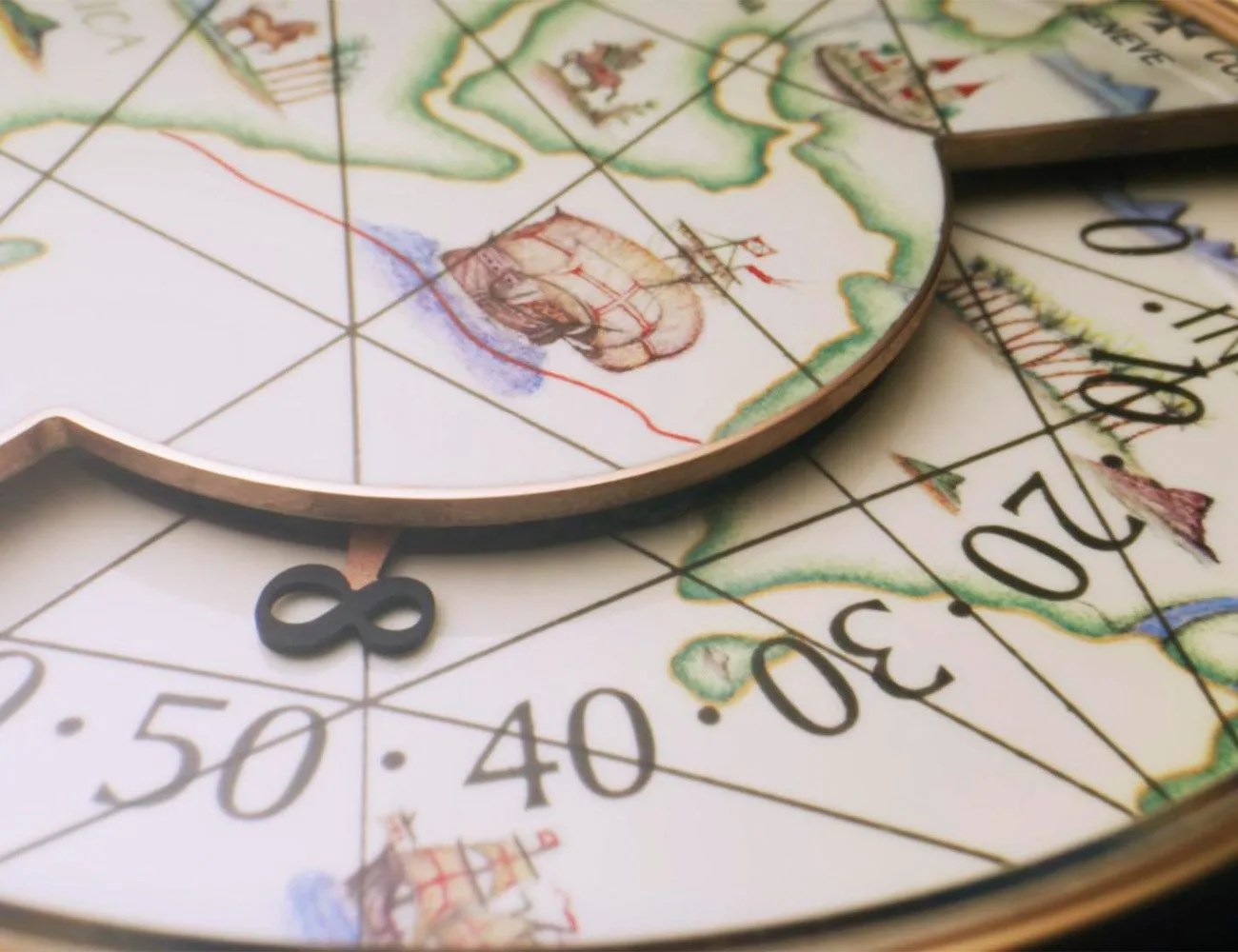 Vacheron Constantin
Vacheron ConstantinThe wandering hour mechanism is best observed when the hour changes: When 6 o’clock begins, for example, a “6” will be pointing to zero while the outgoing 5 o’clock hand is at 60. At that exact time, you’ll also be able to see the third disc rotate from displaying “4” at its tip to “7” at the far end of the dial before it reaches the minutes track. It’s all unnecessarily complicated, of course, but the effect is mesmerizing, and the earliest known example is said to have had a practical origin.
In 1656, such a clock was produced for Pope Alexander XII by the Campanus brothers in Italy, and its purpose was to allow the hour hand and minute scale to be backlit by a lantern so the insomniac pontiff could read it at night (which probably didn’t help his insomnia). Later clocks and pocket watches also featured wandering hours, but this feature has since found its way onto modern wristwatches with a notable example in Audemars Piguet’s Star Wheel first made in 1991.
Wandering hours watches are complicated and inevitably more expensive than simpler watches. They’re also relatively rare today, but some notable and smaller brands alike still produce this obscure but captivating horological curiosity.
